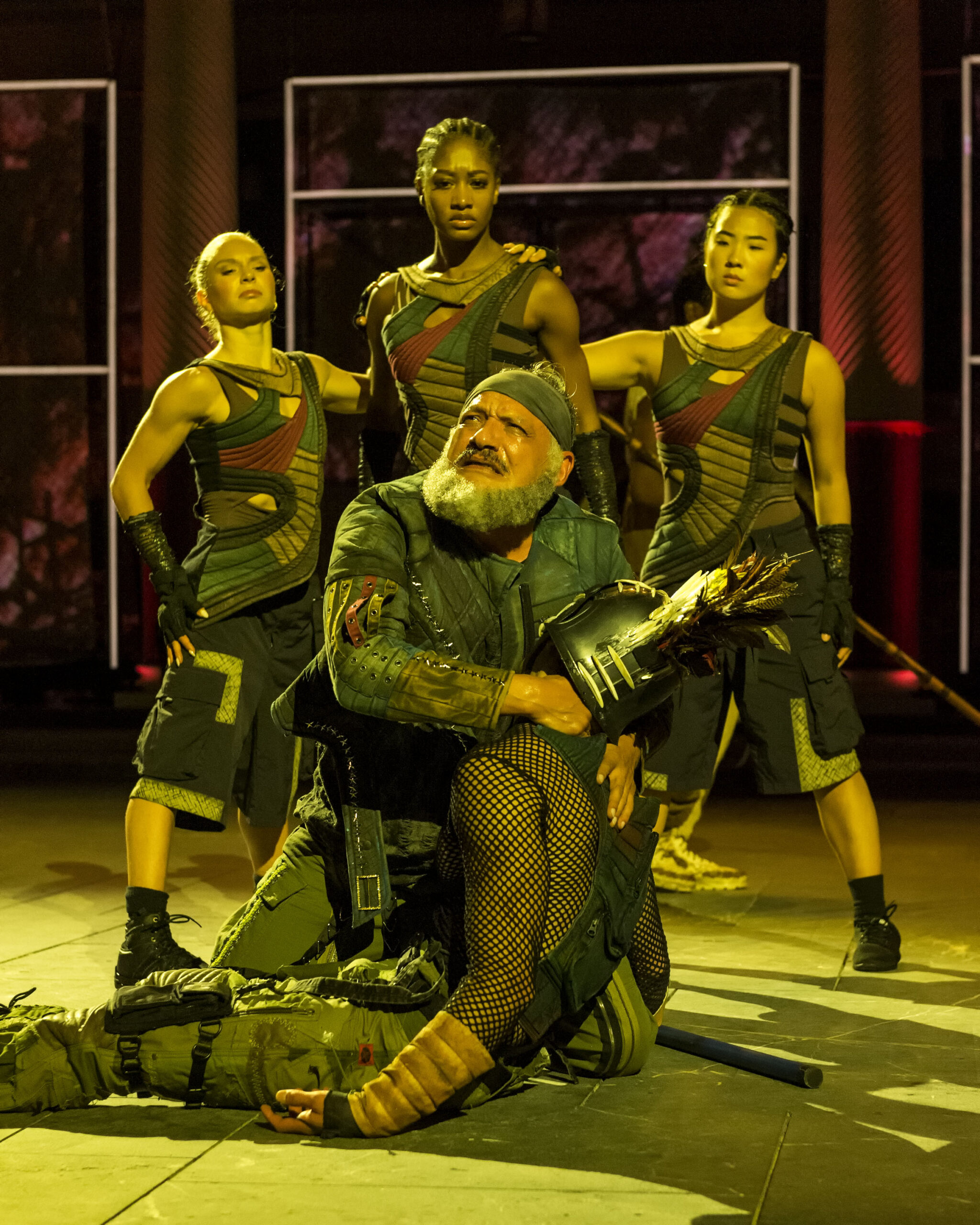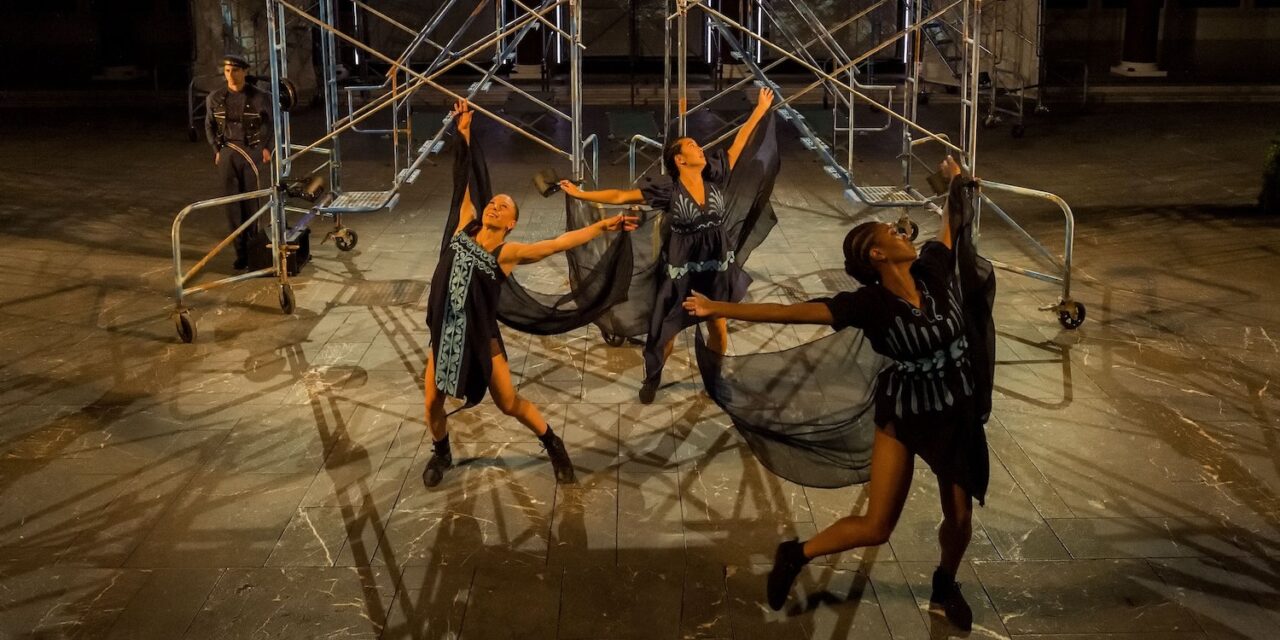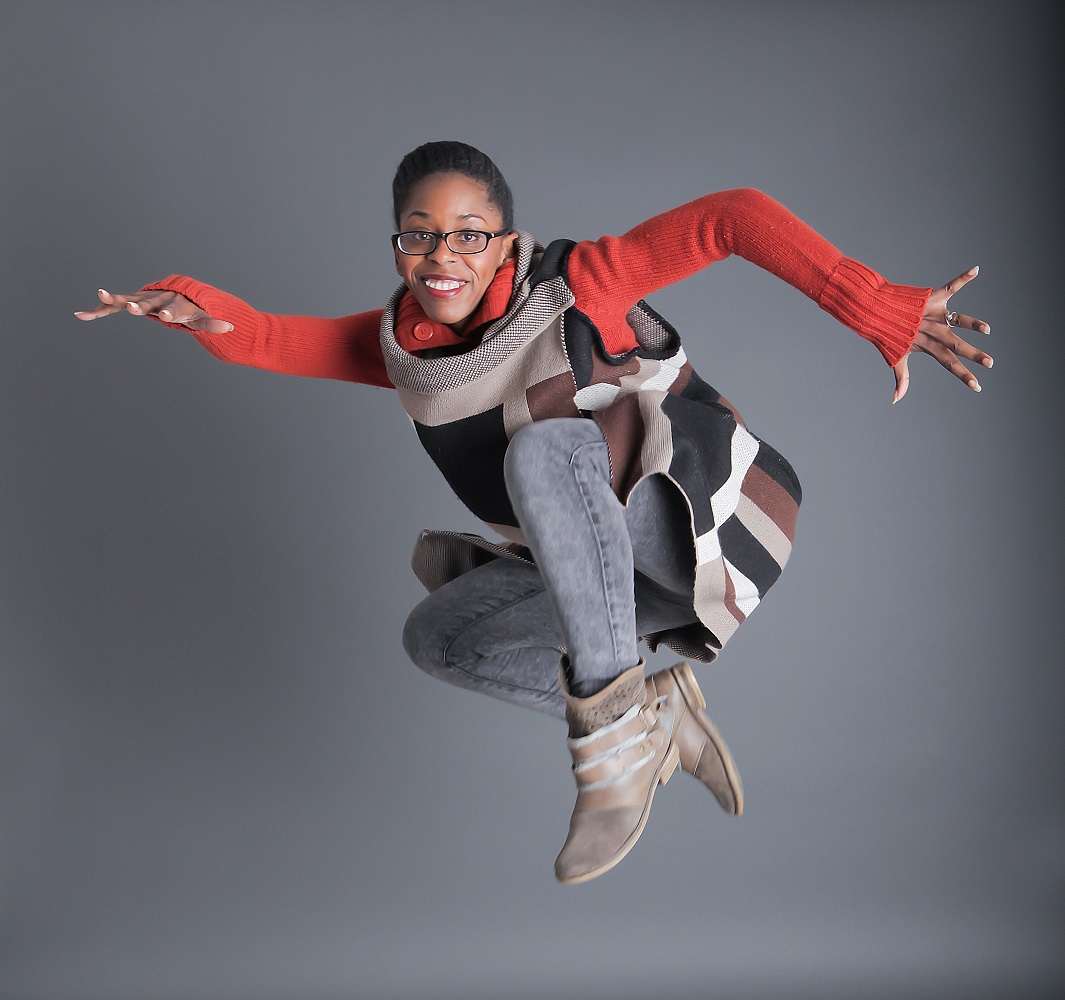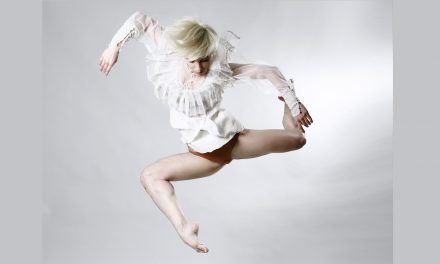Each summer, the Getty Villa hosts a live theatrical production of a Greek tragedy or comedy. Sometimes it is a classical rendition, sometimes a contemporary reconsideration, and sometimes a comedic deconstruction. These late summer presentations are live in the Villa’s acoustically amazing outdoor amphitheater, just as Greek plays originally were presented.
For 2024, the Getty Villa takes a new tack. Instead of an existing Greek play, the selection is the Classical Theatre of Harlem’s Memnon, a new play about a Trojan War hero few have heard of, but one overdue for recognition.
And no, Memnon is not a nickname for Agamemnon, a much better known and completely different fellow in the Trojan War. (Cliff notes version: “Agamemnon” is the head of the army his brother King Menelaus sends to retrieve his wife Helen after she is abducted to Troy. “Memnon” is an Ethiopian King who comes to the aid of Troy and does battle with Achilles).
Ralph Flores, the Getty’s Senior Program Specialist/Theater, helped navigate CTH’s long and winding road to the Getty. Written by Will Power and directed by Carl Cofield, the artistic team for Memnon includes choreographer Tiffany Rea-Fisher, artistic director of the modern dance company EMERGE125. She also brought three of her company dancers who appear in Memnon.

Dancers Katherine (Kat) Files, Jenna Kulacz, and Holly Hwang Belshaw. Seated: Jesse J, Perez and Daniel José Molina – Photo by Craig Schwartz Photography
Recently LA Dance Chronicle’s Ann Haskins spoke with Flores and Rea-Fisher about the play’s Odyssean journey from New York to Malibu, the role choreography plays in this world premiere, and the unusual relationship between a CTH and a concert dance company.
LADC: I understand it took five years for Memnon to come to the Getty Villa’s MainStage.
Ralph Flores: I was in New York for business in 2019 with one extra day. I was looking for something to see, when I read in the New York Times about a production of the Bacchae at the classical Theater of Harlem. I called the theater to see if there were any tickets and learned it was an outdoor theater, general seating, no reservation; you just show up. I went and really enjoyed the production, very clever, very creative in the staging. Luckily, the director, Carl Cofield, was there and we started a conversation about maybe collaborating on something.
LADC: Originally, CTH was going to bring Antigone, what happened?
Flores: Yes, initially, Carl suggested Antigone. We had never done an Antigone at the Getty, so it sounded like a great idea. Then two months later, Carl called and says a playwright friend, Will Powers, had come across this Ethiopian character who is pretty significant in the Trojan War, and they would love to have the opportunity to explore creating something based on that character. It sounded amazing, the idea of doing something original, not just restaging or reimagining an existing Greek play. Within two months, a remarkably short time, they had the play.
LADC: Tiffany, how did you get involved with Memnon.
Tiffany Rea-Fisher: I have been the resident choreographer for Classical Theatre of Harlem for the last eight years. I was recommended to CTH’s producing head, and it was just a match made in heaven. At first, it wasn’t formalized. It was “Oh, if you’re looking for this, I do have a dance company, so you don’t even have to audition dancers. I come with 12 dancers that are highly trained and I have a shorthand with them.” And then it really became a thing. Memnon is our ninth project together. As the director Carl Cofield puts it, when the opportunity to do a world premiere at the Getty came along, it was a no brainer.
LADC:-How many dancers are involved?
Rea-Fisher: Just three dancers this time. It’s a very small cast, yet a juggernaut of talent. There are eight people in total, and three of them are dancers, Katherine (Kat) Files, Jenna Kulacz, and Holly Huang Belshaw. All three are from my company EMERGE125.

Eric Berryman (Memnon), Jesse Corbin (Achilles), Jesse J. Perez (Nestor), Andrea Patterson (Helen) – photo by Craig Schwartz Photography
LADC: Where does movement and dancing come into play in telling the story of Memnon?
Rea-Fisher: I think one of the really brilliant things that CTH does is carve out this beautiful niche that’s not a straight play and that’s not a musical, but adds music and movement in a way to help push the narrative along. I think when you’re doing Greek tragedies or Shakespeare, sometimes you can lose people that are not aficionados. We give an audience multiple access points which can be really helpful.
LADC: Ralph, what happened with the Covid shutdown in March 2020?
Flores: After the early discussions and the quick turnaround on the play’s writing, we were planning for Memnon to be one of the three indoor theater lab shows we do each year. With Covid, since we could not do live performance, we decided to do a virtual reading of the new play. In October 2022, we screened Memnon for our virtual audience. After the strong and very positive reaction to that YouTube reading, we decided rather than the theater lab, Memnon belonged on our main stage.
LADC: Memnon’s selection as the main stage production has been described as audacious. What is audacious about it?
Flores: It’s something that we have never done before—a brand new play, not an existing Greek play, and a world premiere about a character that is known to scholars, but not to the general public. Memnon is mentioned in The Odyssey and there are references to a trilogy written about Memnon, but that trilogy has been lost.
This is a mythical, classical figure that very, very few people have any knowledge of. So it’s like he was kind of whisked away, washed away, historically. This gives us the opportunity to bring him back, especially as a character from Ethiopia, a black character, who was a significant heroic figure in the Trojan War.
LADC: Tiffany, once Memnon was selected for the Getty main stage, were there discussions with the director and playwright on the points where your skills and choreography would come into play?
Rea-Fisher: Because this is a war play, the movement vocabulary that I needed to come up with already had these beautiful parameters of the Trojan War around it. I could create a world and a vocabulary that was specifically for Memnon. Both Will the playwright and Carl the director wanted to have a kind of informal Greek chorus. They felt that movement and dancers would be a good way to switch up the characters and the transitions. Sometimes the actors are warriors of Troy, other times Achaeans (Greeks), other times royal servants in a scene with Helen of Troy. So between movement and costumes, the dancers really helped the transitions to tell this story with many different cultures involved in this one story.
LADC: How many cultures?
Rea-Fisher: There are three major cultures. There is Ethiopia, Memnon was the Ethiopian king. There are the Trojans, the city of Troy, which was actually somewhere in what is modern day Turkey. And then we have the Achaeans, and that’s the Greeks. So there is a lot of conversation about what it is to be “othered.” What “home” really means? What does it feel like when you go somewhere that’s actually foreign to you, but it feels more like home, and home feels a little bit more unwelcoming. That kind of push and pull is really beautiful, and it gets told very well through the story of Memnon.
LADC: The Getty Theater is a very distinctive venue. What do you think now that you are rehearsing here?
Rea-Fisher: For our purposes, the amphitheater is Grecian in how it presents which really works for this story. When the discussion was about possibly bringing some other story, I don’t know that the backdrop would be as perfectly suited as it really is for Memnon. It has lent itself in very lovely ways to a sense that you have been transported back a few centuries.
LADC: Have you made any adjustments to your original choreography now that you’ve been in the space.
Rea-Fisher: Oh my gosh, yes. Mostly little things. Parts of the set move, then have brakes that need to be locked for safety reasons. So we’ve done this beautiful movement and then it’s like, Hold on! Down to the ground, hit this brake, hit that brake, and that one; okay, now back to beautiful movements. I’m trying to find a vocabulary that feels there’s a reason to go down to the floor. So it doesn’t take us out of the moment. The whole point is for the movement to bring the audience deeper into the piece, not break the momentum. I needed to find movement within the world that I’ve created that goes down to the floor. And another thing, because we knew about the marble floor, I intentionally avoided any jumps. Marble is just brutal. So now, finding ways to go down to the marble floor multiple times was something I had to grapple with, to make part of the world that we’ve all created, to get close enough to set the brake, then keep moving
LADC: You talked about choreography and movement direction. What do you find is the difference between the two?
Rea-Fisher: I think that there is a clear distinction between choreography and movement direction, but I feel comfortable in both places. Choreography requires a certain skill level in dance, where you’re doing broad sweeps of movement that is recognizable to the audience as dance. Whereas, each actor through each scene is kind of holding something different in their body. It really is the individual; what’s happening in that individual’s body to tell the story of happiness or aging or hurting or being royalty. So movement direction is much more pinpointed, specific.
In the world in this play, in particular. I probably worked most with Helen of Troy. She really has quite the range, and the movement challenge was how to bring in that regal element, wearing her woman-ness like her armor and then in this other, wonderful scene where she can actually be a little bit more human. It’s just about accessing that element and making sure that within the team that Carl has created, everyone is able to bring their brilliance to the table and access this story through as many ways as possible. My way just happens to be through the body.
LADC: Tell me about the interplay between your company EMERGE125 and Classical Theatre of Harlem?
Rea-Fisher: I’m very grateful because the collaboration between my dance company and CTH is not a model you see often, but it has really worked brilliantly for us. My dancers know how to give a stellar dance performance. With CTH, they also learn to theatricalize movement which requires understanding how to support, to stand in silence, and to be still. I think doing only my works, they wouldn’t get those other elements that theater requires. So I think this is a wonderful learning opportunity for my company members as well.
LADC: EMERGE125 is based in New York?
Rea-Fisher: It was founded in 1981 and I have been the director of the company for eight years. So my time as director of the dance company overlaps my time with CTH. That relationship was what I was looking for, a vision of new audiences. I believe dance in general, needs to get out of our golden palaces and come down and see where are people going. So that’s where we need to be.
LADC: When you first started doing movement or choreography for the theater company, did you have to adjust how you approached what you were doing to the demands of having a director and a playwright, as opposed to where it is all your choices?
Rea-Fisher: Yes, but I think it was a happy adjustment, because it’s a bigger tribe. With my dance company, it’s me, as the artistic head it’s one idea. I’m coming up with the movement, the music, working with a costume designer. It’s all coming from one place, me. To be able to work with a playwright and a director, it expanded my world, and I could just kind of stay in my lane. I didn’t have to think about the production of it all. I could just think about the movement. I found it really freeing. I just needed to hit this movement for this scene right here. And I always tell Carl or other directors that I’m working with, let me build something and give you something to react to, and then they can say more of this, less of that. My job is to be in support of the director’s vision. It allows for a lot of play. Some people interpret the story through lights or through sound, I get to interpret it through movement. And that’s really special.
With Memnon, both Will and Carl are aligned. They are passionate about bringing the classics, Greek tragedy and Shakespeare, into the modern age, into the now, so that people understand why these stories are important. Also, that these stories can be told in different ways, through a myriad of lenses that actually reflect today’s values and our society much more than you might think. This particular piece, I think that idea of that itchy, scratchy, uncomfortable feeling, somehow feeling ‘othered’ in a place that should feel like home and searching for that resolution. Acceptance matters, even if we don’t want it to matter, it does.
Memnon from the Classical Theatre of Harlem at the Getty Villa outdoor theater, 17985 Pacific Coast Hwy., Malibu; Thurs.-Sat., Sept. 5 -28, 8 pm, $45 (Thurs.), $50 (Fri.), $55 (Sat.,) $40 students & seniors on Thurs. only. Performances | Getty
Featured photo: Classical Theatre of Harlem in Memnon. Photo by Craig Schwartz Photography.
Written by Ann Haskins for LA Dance Chronicle.











